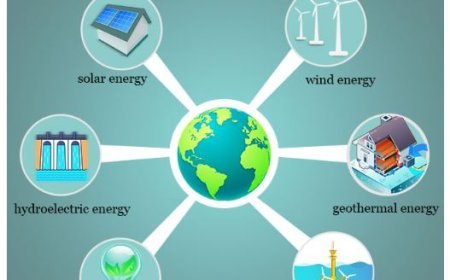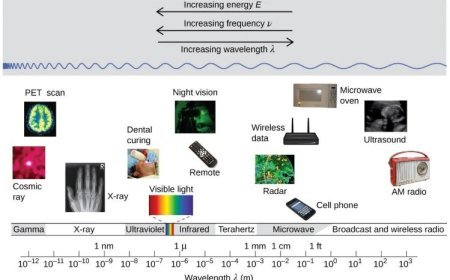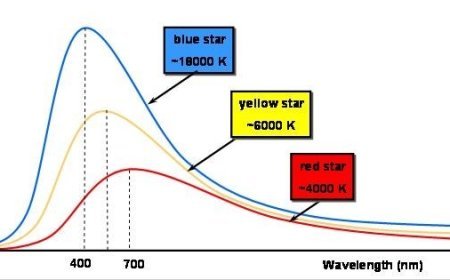Negative Energy States – Concepts, Dirac’s Theory, and Applications in Quantum Physics & Relativity
Negative energy states represent one of the most fascinating ideas in modern physics, connecting quantum mechanics, general relativity, and cosmology. Introduced through Dirac’s theory of the electron, the concept proposes that a "sea" of negative-energy electrons—known as the Dirac sea—forms the foundation for antiparticle creation. In quantum field theory, fluctuations in vacuum energy can give rise to regions of both positive and negative energy, influencing effects like Hawking radiation and black hole evaporation. Meanwhile, general relativity allows negative energy densities to theoretically support wormholes and warp drives by stabilizing spacetime distortions. Despite its elegance, negative energy remains theoretical, with no direct experimental proof, and poses challenges to causality and spacetime stability.
1. Negative Energy States
- Negative energy states occur when a system's energy level is lower than its normal "zero" energy level.
- In classical physics, energy is generally considered positive, similar to how a ball gains energy as it rolls up a hill.
- However, in some quantum systems, particles or fields can exist in states where their energy is less than zero.
- This does not mean that energy is "bad" or "wrong"—it is simply a different perspective in certain theoretical frameworks.
2. Negative Energy in Quantum Mechanics
A. Dirac’s Negative Energy Sea
- Dirac's Theory of the Electron:
- The most well-known example of negative energy states comes from Paul Dirac's theory of the electron.
- His idea suggests that a vacuum consists of a "Dirac sea"—a collection of states with the lowest possible energy, particularly those with negative energy.
- Antiparticles and the Dirac Sea:
- According to Dirac's theory, when a positive-energy electron is excited from one of these negative-energy states, it leaves behind a "hole" in the Dirac sea.
- This hole behaves like a positron—the antiparticle of an electron, carrying the opposite charge.
- Role of Negative Energy:
- The concept of negative energy states provided a theoretical foundation for antiparticles.
- Particles in a vacuum can transition to higher-energy states, while the idea of a vacuum filled with negative-energy states helps explain how particles and antiparticles emerge in quantum field theory (QFT).
B. Vacuum Energy and Quantum Fluctuations
- Vacuum Energy:
- In quantum field theory, energy is never exactly zero, even in a perfect vacuum (empty space).
- The energy associated with the vacuum state is called vacuum energy.
- Quantum Fluctuations:
- Quantum fluctuations cause virtual particles to continuously appear and disappear.
- Although this energy is usually positive, there are conditions where both positive and negative contributions to energy exist.
3. Negative Energy in General Relativity and Cosmology
A. Implications for General Relativity
- Negative Energy and Spacetime Curvature:
- In general relativity, energy is directly linked to the curvature of spacetime.
- While the total energy of the universe is expected to be positive, certain scenarios allow for localized negative energy.
- Wormholes and Negative Energy:
- Negative energy might be required to stabilize wormholes, preventing them from collapsing.
- A wormhole is a hypothetical shortcut through spacetime, connecting distant points.
- The presence of "exotic matter" with negative energy density could allow wormholes to exist without violating the laws of general relativity.
B. Hawking Radiation and Black Holes
- Hawking Radiation:
- Stephen Hawking's groundbreaking work introduced the idea that quantum effects near a black hole's event horizon cause it to emit radiation, known as Hawking radiation.
- Negative Energy and Black Hole Evaporation:
- Near the event horizon, particle-antiparticle pairs can form.
- One particle may fall into the black hole, while the other escapes as Hawking radiation.
- From an external observer’s perspective, the particle that falls into the black hole has negative energy, causing the black hole to lose mass over time.
4. Exotic Matter and Negative Energy
A. Warp Drive and the Alcubierre Drive
- Theoretical Faster-Than-Light Travel:
- The Alcubierre Drive is a theoretical concept based on general relativity, proposing that spacetime could be "warped" to allow movement faster than the speed of light.
- Role of Negative Energy in Warp Drives:
- For the Alcubierre Drive to function, regions of negative energy density would be needed to expand and contract spacetime, effectively moving a spaceship faster than light.
- This idea relies on exotic matter with negative energy, though no such material has been discovered.
B. Exotic Matter and Wormholes
- Wormholes as Space-Time Tunnels:
- Wormholes are theoretical tunnels through spacetime, potentially allowing instantaneous travel between distant points.
- Negative Energy to Keep Wormholes Open:
- To prevent a wormhole from collapsing, negative energy would be required.
- This negative energy would act against gravitational forces, keeping the wormhole stable.
5. Theoretical and Practical Challenges
A. The Existence of Negative Energy
- Lack of Experimental Evidence:
- While negative energy exists in theory, there is no direct experimental evidence supporting its existence in nature.
- Quantum Physics and General Relativity Perspectives:
- Quantum mechanics and general relativity suggest scenarios where negative energy might be possible, but its practical applications remain uncertain.
- Ongoing Research:
- Theoretical physicists continue to explore the possibility of negative energy, but many questions remain about how it could be used in real-world applications.
B. Causality and Stability
- Potential Causality Violations:
- Negative energy could challenge causality, which dictates that causes always precede effects.
- In cases like wormholes or warp drives, it is unclear whether causality would still hold or if these scenarios could create paradoxes.
- Stability Issues in Spacetime:
- Negative energy might lead to spacetime instabilities, potentially resulting in catastrophic consequences or even violating fundamental laws of physics.
What's Your Reaction?

























